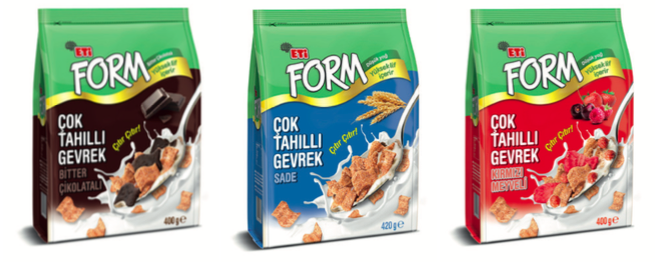Re-launching a Brand With the Use of Neuroresearch
The cereal category in Turkey is a new, growing category with a low household penetration and consumption rate, due to established breakfast habits. Eti, one of the biggest brands in the snack category, has observed a demand shift towards the category. Eti already has a brand positioned in the cereal category. However, they failed to reach the targeted sales figures. For this reason, they needed a greater in-depth understanding of consumers to enable the brand to be repositioned. How to re-launch the brand with the help of more relevant communication?
Unlike previous research, Eti decided to reposition its brand according to the unconscious mind of the consumer. To shed light on consumers’ unconscious motivations and barriers towards the category, Thinkneuro conducted an extensive neuro study, aiming to address every step from product performance to packaging, brand positioning, and communication concept.
The aim of the research was to understand the motivations and barriers of the consumers towards the category and the brand. The research was conducted in two stages, one in September and the other in December 2016; whereby the second stage’s inputs were designed based on the outputs of the first stage. The chosen participants were women (100%) aged between 19 and 35, belonging to B, C1 SES groups in accordance with the brand’s target segment.
The first stage was conducted with 114 participants in total. During this stage, taste, pack, concept and brand studies were conducted. The second stage was conducted with 32 participants; here the renewed product based on the results in the first stage was tested with two different brands. The fit of the product and alternative brands were also tested using the brand test approach in the second stage. An fNIRS (functional near infrared spectroscopy) imaging technique was used in the taste, brand personality and concept tests. EEG (Electroencephalography) and eye-tracking devices were used in the packaging tests.
Neuroscore based in-depth interviews were conducted with a quarter of the participants in each stage to understand the reasons behind the brain data. After the holistic research process, the findings were compared with previous studies and enriched by consumer neuroscience, psychology and marketing literature. In light of this holistic shopper neuro research, motivations and barriers were revealed and a marketing strategy along with suggested action plans was defined.

Results
Significant findings related to subconscious motivations, barriers and habits were reached with neuro measurements and neuroscore based in-depth interviews. According to the Nobel Prize-winning Daniel Kahneman’s “Peak & End Theory” (Kahneman, 2011, Fast and Slow Thinking), any experience is evaluated by its peak and end moment. Therefore, the cereal consumption process, where the performance of the product drastically changes with the addition of the milk, was measured by taking all steps into account. Findings regarding the product performance led to a new product recipe, which was tested and performed well in the TasteNeuro study in the second stage.
Most importantly, BrandNeuro’s results revealed motivational differences between oatmeal and cereal consumption. Cereal brands in Turkey emphasize “being on a diet” and “weight loss” notions in their communications, which works for the benefit of oatmeal brands. Although claim-based research results state the motivations are similar, BrandNeuro’s results show that they are similar “only on the surface”. Based on the unconscious motivations, the brand positioning was altered along with the marketing strategy, brand name, the pack, and the communication language. The tone of voice was also changed to place more emphasis on the symbolic benefits of the product rather than the functional benefits.
The study created a huge impact on FMCG and wellness marketing professionals. This united research yielded results from brand positioning to taste, from concept to packaging and from branding strategy to communication. It produced all sorts of findings and actions in the formation of the re-launch strategy. Eti notes that the study has created a completely different playing field and accurate positioning with its clear and effective findings and outputs. This study won a Golden Owl award, which is presented once a year to the most successful study by Turkish Researchers’ Association where real-life market results are also taken into consideration. Last but not least, the awareness of consumer neuroscience in the FMCG and wellness brands was boosted with the help of WOM that was created with this study.
Conclusions
Re-launching a brand, especially in a new category, can be tricky. It is not penetrating the existing category, but rather breaking the old habits and creating a spot for the brand which was not very successful at the previous attempt. Understanding underlying consumer dynamics requires a deep dive into consumer emotions and motivations. In order to create difference in the market, the main drivers, i.e. emotions should be understood thoroughly. It is also critical for companies and brands to be courageous enough to implement neuro learnings instead of traditional research results. Only then can a shift in the figures in the market be experienced.
CONTACT INFORMATION
ThinkNeuro
www.thinkneuro.net
This article was originally published in the Neuromarketing Yearbook. Order your copy today!